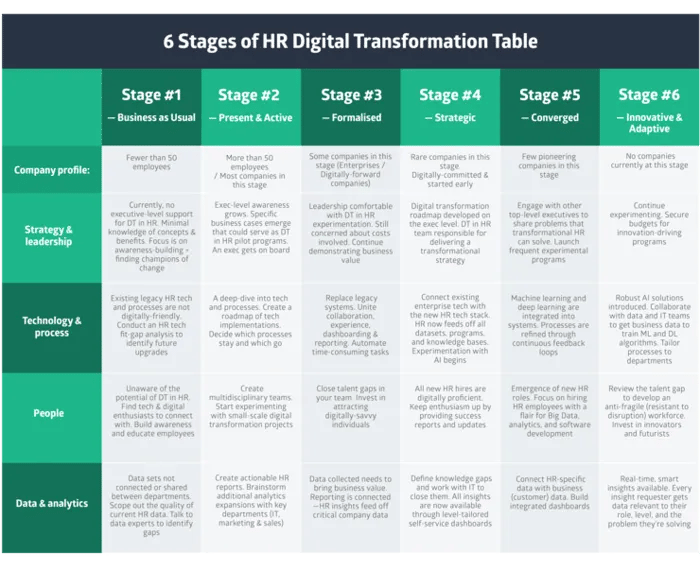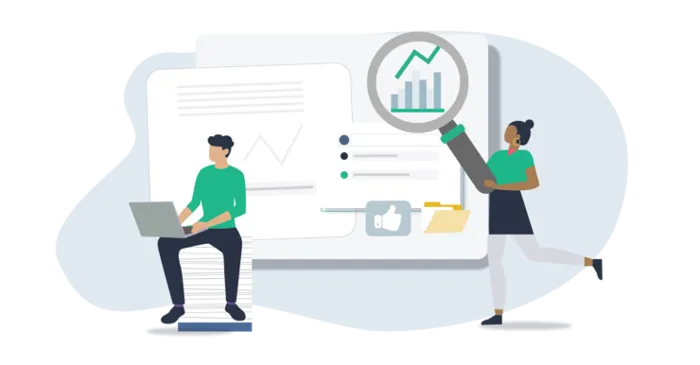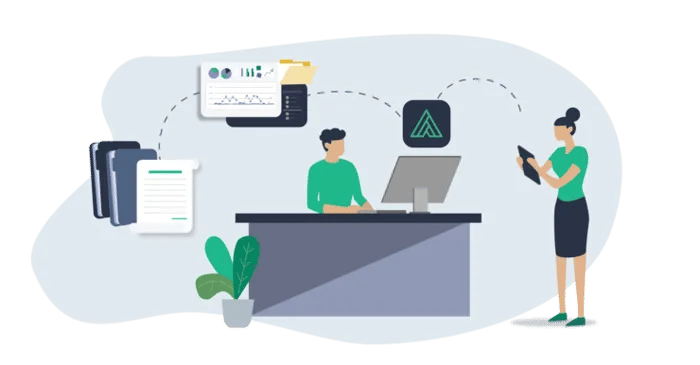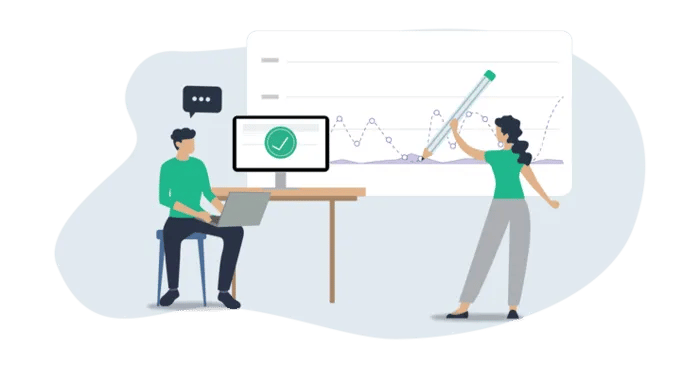The Ultimate Guide to HR Digital Transformation: a Roadmap (Part 3)

HR digital transformation is not a switch that you flip on. It’s not something that you do, and then you’re done with. Instead, it’s a continuous process of chipping away at the legacy of HR solutions and replacing them with new systems and ways of doing things. In this article, we dive into the stages to plan your HR digital transformation roadmap.
As we’ve mentioned before in part 1 and part 2 of this guide, companies still struggle with slightly more complex digital implementations in human resources departments because these legacy processes have been around for decades. Replacing them — and the way of thinking that’s propping them up — won’t be achieved overnight.
However, there’s a method to dragging HR into a digitally-forward future. And it is rooted in the six stages of HR digital transformation that make up your HR digital transformation roadmap.
The six stages of an HR digital transformation roadmap
When they talk about it, most HR experts borrow from Brian Solis’s work that focuses on digital transformation in customer experience. He notes that every DT initiative (HR or otherwise) can be divided into six distinct stages:
(Lots to say, not enough pixels in the world - click on the image & and it will double in size)

In no part of our research did we come across a company that’s moved definitively beyond stage #4 (yet, some did start stage #5 experimentation), which means that this represents a realistic framework for all companies to structure their HR digital transformation roadmap upon.
Stage #1: business as usual

Also known as the ‘but-we’ve-always-done-it-this-way’ stage.
If your organization is in this stage of the HR digital transformation roadmap, HR processes, tech, and people are still clinging to decades-old solutions. The leadership is not interested in change because they see no value in change.
How to successfully navigate through this stage the roadmap
- Strategy and leadership. Your main job is to build awareness of the benefits of HR digital transformation. Invite a guest speaker, distribute case studies about DT in HR, and try to find allies in upper management.
- Technology and processes. Make a list of all HR processes currently in use. Have specialists walk you through the steps of each and every process and assess how streamlined and standardized they are. On the tech side of things, conduct a fit-gap analysis to find out a) what type of tech stack you need to cover current HR needs and b) what you need to scale as you move through the stages of HR digital transformation.
- People. Put some feelers out to identify people in the organization who could help you implement changes. Focus on those with digital know-how and an appetite for experimentation. At the same time, work on educating HR employees on the benefits of HR digital transformation.
- Data and analytics. Determine the quality of the HR data you’re currently collecting (low-medium-high). Identify those metrics that have the highest business impact. Discuss how to improve reporting and quality with (HR) IT experts and data analysts.
Stage #2: present and active

Welcome to the ‘let’s-tinker-with-this-and-see-what-happens’ stage of the HR digital transformation roadmap.
The top brass is finally realizing the benefits of HR digital transformation. Also, there are pockets of innovation emerging. HR employees are connecting to launch small-scale test projects and successfully implementing technology and process changes.
How to successfully navigate through this stage of the roadmap
- Strategy and leadership. Identify an urgent business need (drop in engagement, poor performance scores, low productivity). Partner with a willing exec to brainstorm a solution rooted in digital HR that could fix/prevent this issue in the future. Create a strong business case that will intrigue a few more people from the leadership team enough for them to throw their weight behind the project.
- Technology and processes. Create a roadmap of future technology implementations. Discuss the details with HR, IT, and business ops stakeholders. Decide which current tech solutions stay; which ones need to be expanded, and which ones are getting sunsetted.
For processes, create the same roadmap but keep the focus on those processes that a) have the biggest business impact, and b) deliver the best employee experience. Favor incremental improvements you can test before deploying globally. - People. From several multidisciplinary teams will use impact-effort matrices and take a stab at getting big results through small changes.
- Data and analytics. Partner with business and analytics experts to create reports with actionable people-centric insights. These reports need to demonstrate business value. Organize interdepartmental brainstorming sessions to identify which crucial data points are currently missing.
Stage #3: formalized

In this stage of the HR digital transformation roadmap, transformation is well underway. Projects grow in scope. You’re now experimenting more purposefully, looking to solve particular business problems.
That said, there’s some pushback from the top brass because you’re now spending more money. Producing results becomes imperative, especially as you’ll need even more cooperation (and a bigger budget) to successfully transition to the next stage of the HR digital transformation.
How to successfully navigate through this stage of the roadmap
- Strategy and leadership. Continue building your case for plowing ahead with HR digital transformation. Leverage executives who have bought into your initiatives to be bolder in your asks — more manpower and more money. Create a timeline for projects, regularly update the leadership team, and keep the focus on your results.
- Technology and processes. Invest heavily in replacing legacy tech systems. Buy or build an all-in-one solution that unifies collaboration, employee experience, dashboarding, and reporting.
On the process side of things, start cutting out things that don’t work in a digitally-driven HR landscape. Automate time-consuming steps wherever possible and free up time for strategizing.
- People. Start rolling out training programs to cover any potential digital skills gaps in the HR department. A good understanding of concepts such as design thinking and horizontal integration is a must for all employees.
- Data and analytics. Focus on creating a bespoke reporting and analytics dashboard that delivers business-critical data. Collaborate with HR, IT, and other departments to regularly improve data collection and reporting.
Stage #4: strategic

In this stage of the roadmap to HR digital transformation, multidisciplinary teams driving the HR transformation get the seat at the top brass table.
You’re no longer busting your chops trying to make people see the benefits of digital transformation in human resources. That part of the heavy lifting is done.
What’s next is building on the HR digital transformation roadmap, stretching several years into the future. This means coming up with a strategy that connects HR to every facet of the business
How to successfully navigate through (and beyond) this stage of the roadmap
- Strategy and leadership. The name of the game is high-level strategizing. Your HR transformation team is now involved and contributing by sharing problems and challenges and proposing solutions.
- Technology and processes. Implement a tech solution that feeds off a single data source. Ensure data validity and security, and allow the HR tech stack to access any dataset necessary to make accurate predictions and suggestions. Continue two algorithms (machine learning and deep learning), and begin work on automating tn-dependent processes up until now.
Continue to optimize HR processes and work, playing frequent pulse surveys to gather feedback. Train software to make more accurate predictions (for example, when it comes to L&D suggestions) by implementing a rating system to score said suggestions.
- People. Focus on bringing in data-savvy employees with a flair for HR. You’ll need them as you become more reliant on Big Data. Additionally, either train or hire people with a robust software dev skillset. Often, you’ll need to build solutions from scratch to cover the unique demands of your operation. Keep in mind that these profiles are in high demand, so you’ll need to work on making your company more attractive to top talent.
- Data and analytics. Now is the time to connect HR-specific data with business (customer) data. Build integrated dashboards that will, in time, be able to calculate the impact additional training, employee engagement, and/or employee well-being have on the company’s bottom line.
Stage #6: innovative and adaptive

At this stage, the role of your digital transformation team is to innovate and explore possibilities.
In cooperation with other departments, deploy pilot programs… even if the ideas sound outlandish. Your HR digital transformation is a key driver of business. Experimentation (and even failure) helps you keep the necessary momentum.
- Strategy and leadership. Develop a pulse-taking mindset where you continuously check in on existing processes. Use feedback to fine-tune digital components that work and to eliminate those that don’t. Secure budgets for experimental pilot programs that have an impact on all areas of your business.
- Technology and processes. Double down on the use of AI in tech. Work with IT teams to create a continuous feedback loop of data that allows your ML and DL algorithms to make even more accurate predictions and suggestions.
Hone your processes to such a level that you’re able to know what works best for each department. For example, the sales team responds best to mentor relationships to develop talent; marketing talent progresses fastest with access to high-ticket training programs.
- People. Invest in forward-thinkers, innovators, and futurists. At this point, you’ve opened up your headcount enough (by automating time-consuming processes) to hire people who’ll be a creative driving force behind your transformation. Review the HR talent gap to stay prepared for disruptive changes.
- Data and analytics. Work on pushing the envelope on real-time, smart insights (for example, highlight different insights in the dashboard depending on the requester's role). Challenge other departments to come up with specific data goals you can work on.
Where are you?
Well, you’re not at stage #6, that’s for sure… But it’s also okay if you’re just treading into stage #2. You now know exactly what you need to work on to speed through that phase and formalize your HR digital transformation efforts.
It will be some time until we have the technology and the know-how to automate HR completely. When that happens, HR departments will turn into business-changing units.
Until then, it pays to take a look at what some companies are doing right now… even if they haven’t reached their 100% digital HR goal.
Want to find out what's next? Check out the last part of this guide here!